Most visitors to our home have noticed and complimented our 1950s steel kitchen cabinets. We live in a brick ranch home built in 1958, in a suburban St. Louis neighborhood that could be the poster child for the baby boom era of American growth.
When we first moved into our house in 1991, the original owner had left us with blue and pink tile bathrooms, original sinks, original aluminum storm windows, plain modern wood closet doors throughout, and shag carpet in the living room. Our house was essentially a time capsule. All of these things may have been “cool” to some people, but they were old, dirty, and tired to us. So out they went. We did keep the finished basement, complete with knotty pine walls and a custom rathskeller bar.
With two young children and new mortgage that first year, there was so much updating to do we decided to leave the kitchen cabinets as they were—except to have them powder coated white to leave the putrid avocado green firmly in the 1950s. Putting in a new kitchen at the time was out of the question for us, not when we needed a new furnace and AC, electrical updating and a roof.
Today, our fifty-seven-year old Republic Steel cabinets are “retro”—and I have to hand it to the manufacturer, our steel cabinets have stood the test of time. I have to admit that it has taken quite a few years for us to embrace our steel cabinets as something we like when they had stood for years as a reminder of the new kitchen we couldn’t afford.
I discovered wonderful historic information about steel kitchen cabinets on the website Retro Renovation. The story of steel cabinets in the United States is a virtual history lesson in modernism, production methods, and early advertising. Among othe things, I learned that these steel kitchens, which emerged slowly from the 1930s, were called “hoosier cabinets,” and were advertised to be “vermin proof.” Diseases like diphtheria, polio, and flu were poorly understood, and killed thousands every year, so sanitation was important.
After WWII, steel plants were clamoring for new products to make, and in addition to cars, housing products were taking up the slack from war production. Selling new steel cabinets and modernizing prewar kitchens was big business between 1954 and 1964. Top metal cabinet manufacturers like Youngstown, Geneva, St. Charles, and Republic Steel fought tooth and nail for market share.
The United States may have won the big war in 1945, but there was a new war to fight in the 1950s and ’60s—and that was to sell new, modern steel kitchens.
++
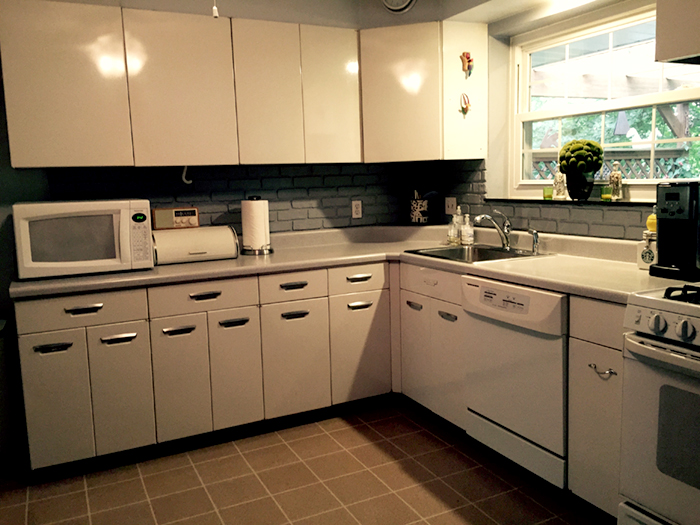
The sixty-year old Republic Steel kitchen cabinets in our St. Louis kitchen
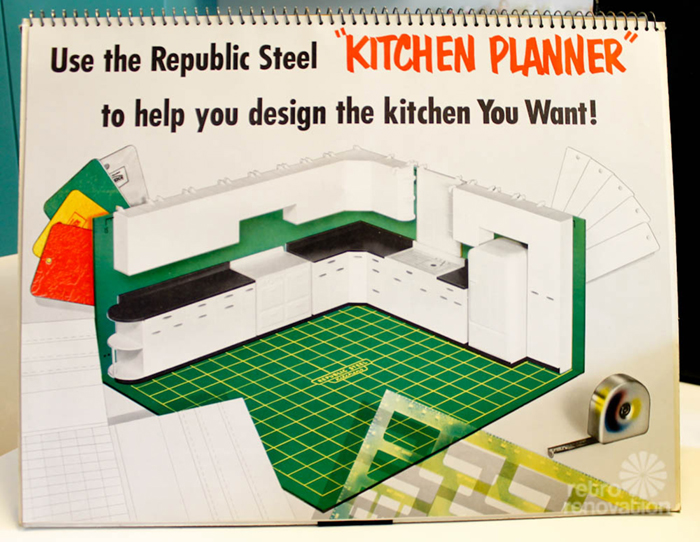
Republic Steel “Kitchen Planner” salesman’s wirebound presentation brochure
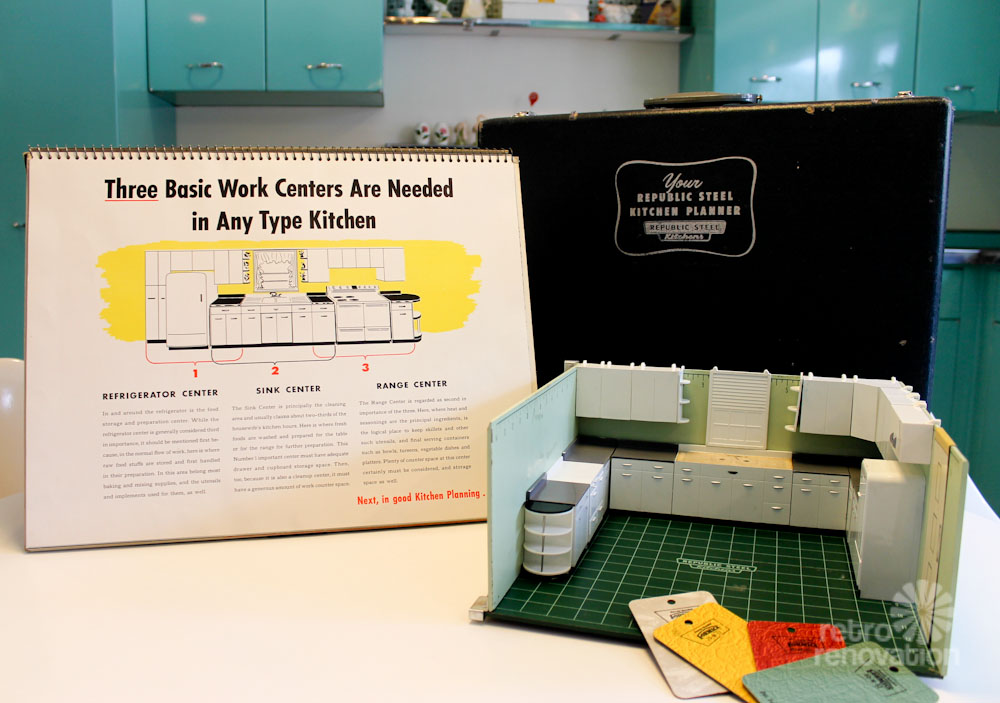
Complete salesman’s presentation kit
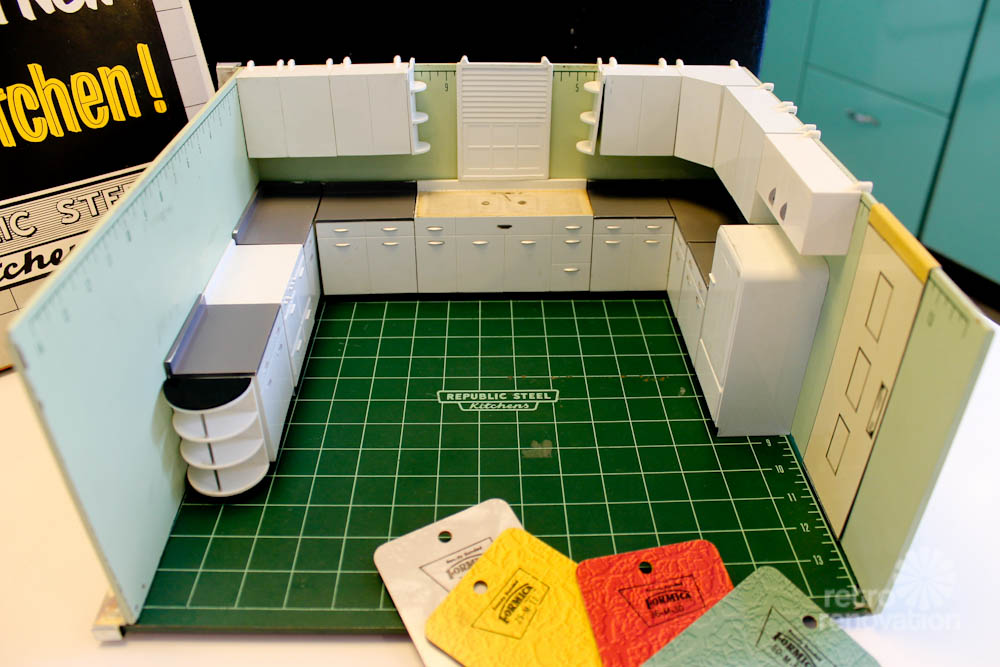
Three-dimensional section of the Republic Steel “Kitchen Planner” salesman’s presentation kit, with three popular Formica counter top chips
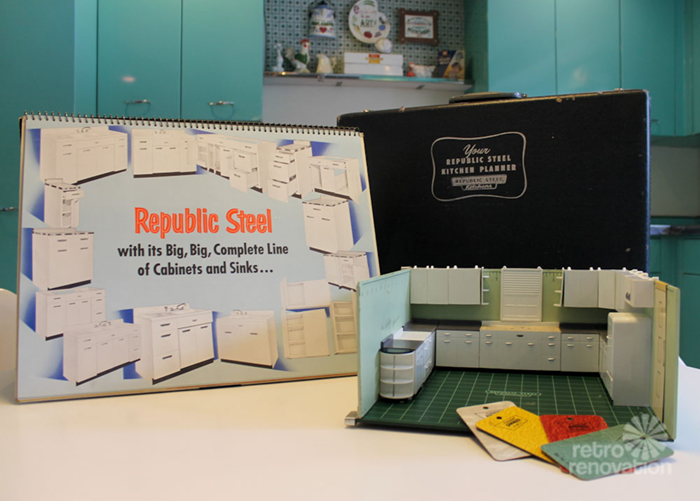
Republic Steel salesman’s kit
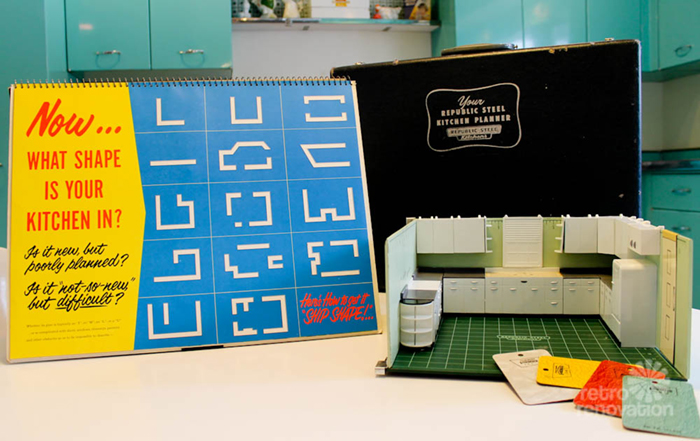
“What shape is your kitchen in?”
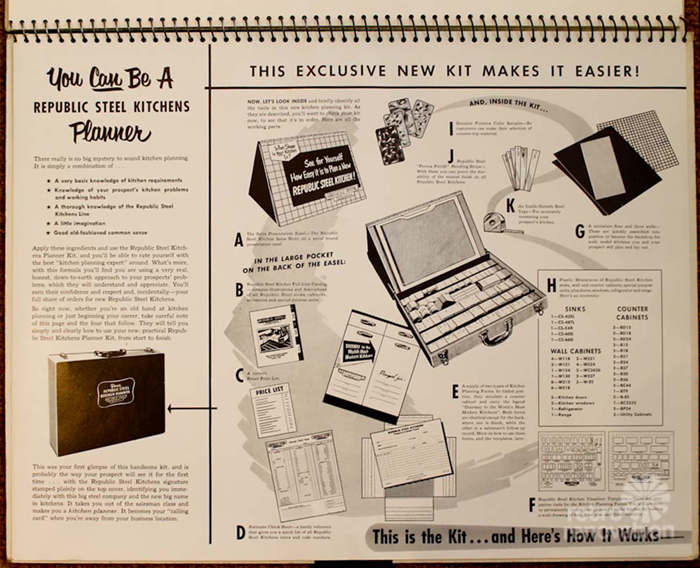
Information page on how you can be a Republic Steel kitchens planner

Even “Awkward Kitchens Can Behave.”
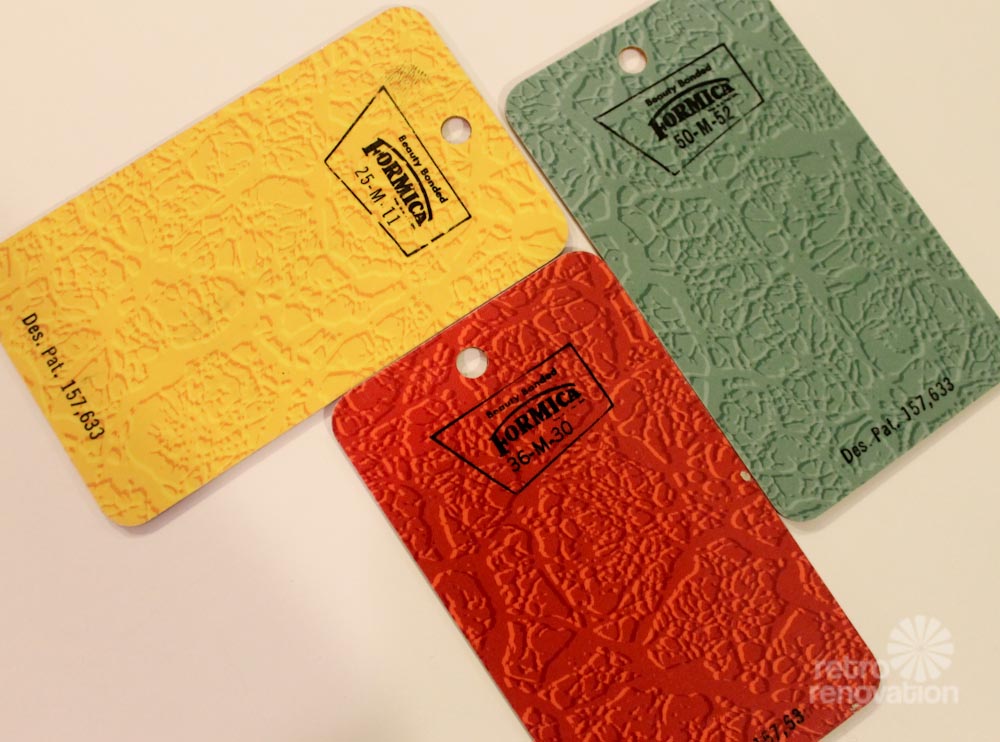
Formica brand color chips came with the Republic Steel Kitchen Planner.
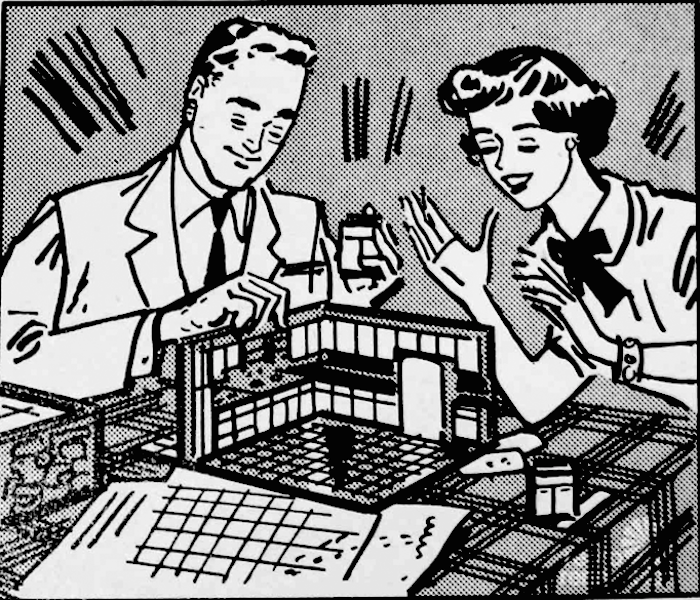
Supporting illustration for the Kitchen Planner.
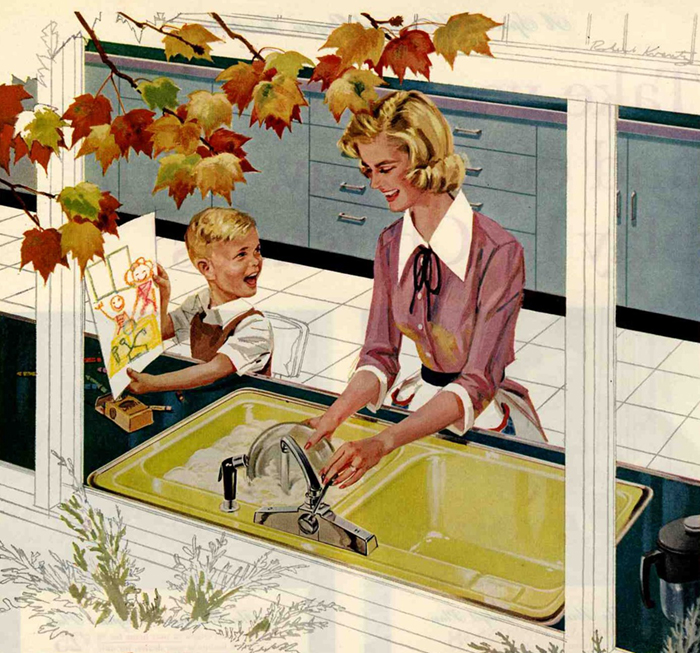
“Don’t bother me now dear—your father will be home soon and I need to have his favorite dish out of the oven on time!”
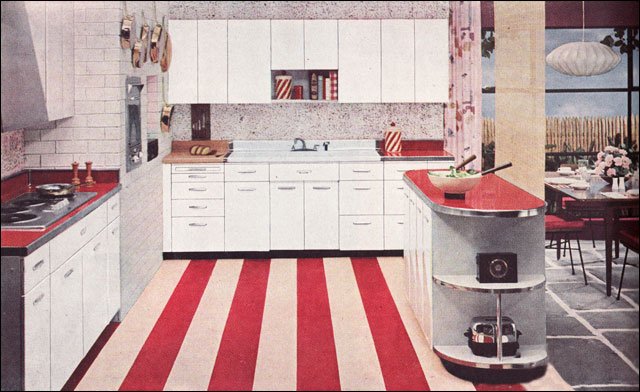
This modern candy-cane themed kitchen has everything the 1953 homemaker desired including the stainless steel range top, wall oven, chromed toaster, and of course, steel cabinets by Republic.

While the color white denoted clean and sanitary, the 1950s eventually saw people accept fun colors, as denoted by this Sherwin-Williams paint selector.

Paint colors, by Sherwin-Williams accent new steel cabinets.
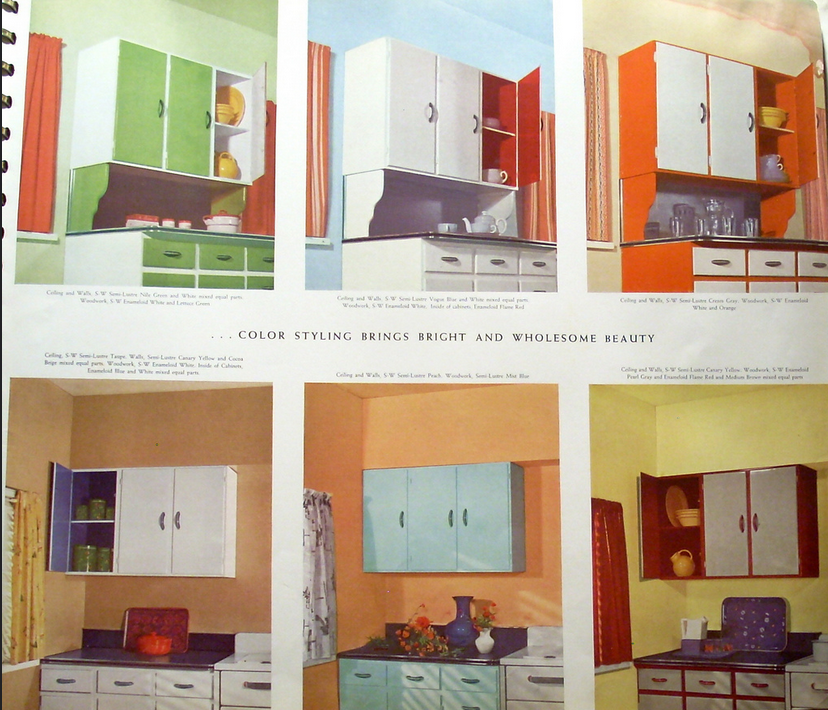
Sherwin-Williams
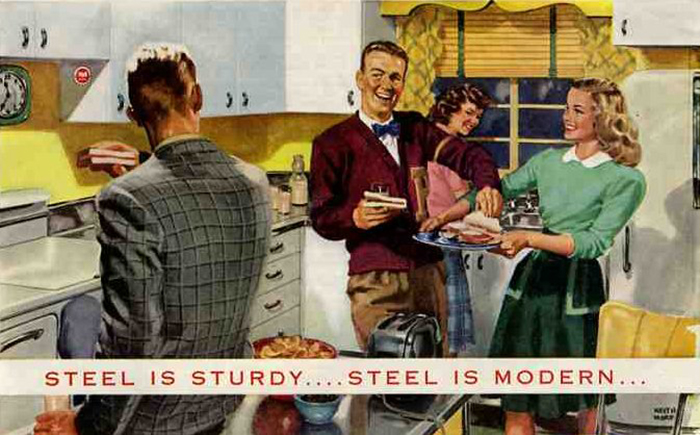
Steel is sturdy … steel is modern!
All images © copyright Retro Renovation
